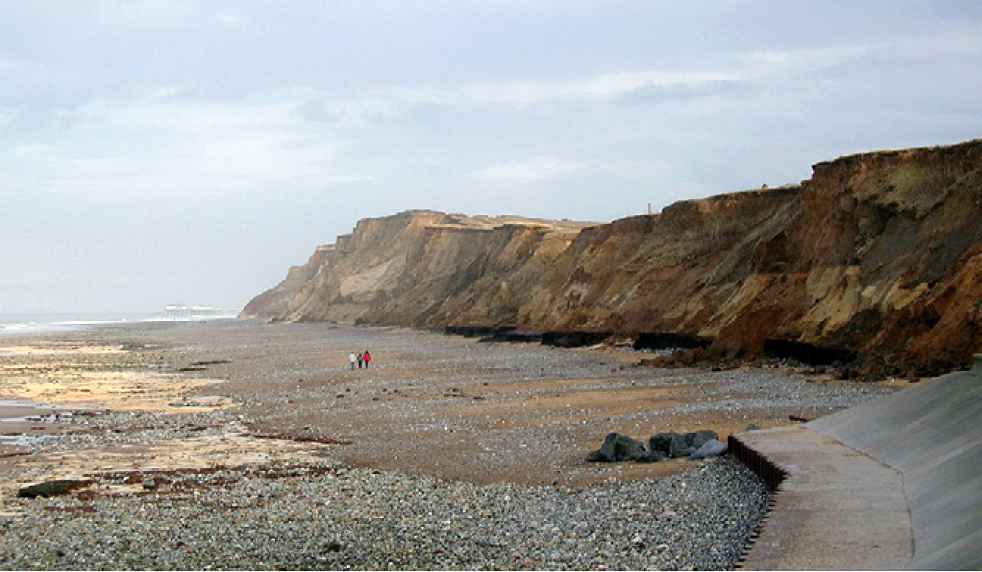
Cromer Forest-bed Formation (CF-bF) freshwater and marine sediments occur at a number of localities on the Norfolk and Suffolk coasts and cover several temperate and cold episodes, underlain by earlier Plio-Pleistocene marine sediments of the Wroxham Crag. The stratotype of the Cromerian stage, the West Runton Freshwater Bed (WRFB; part of the CF-bF) is at West Runton, Norfolk. The WRFB has yielded a rich mammal fauna, freshwater fishes, and sparser birds, amphibians and reptiles as well as remains of plants, molluscs and beetles, indicating a temperate climate at about 700,000 years ago. The most spectacular find from the WRFB is most of the skeleton of a huge ancestral mammoth Mammuthus trogontherii. The WRFB deposits appear to have been laid down in a low energy fluvial environment over a fairly short time period. Several lines of evidence combine to indicate that the WRFB correlates with a temperate interglacial episode post-dating mid-MIS 19 (Brunhes-Matuyama Boundary at c. 780 ka) but no younger than MIS 15 (c. 610 ka). The small mammal fauna and other palaeontological data are consistent with deposition during the early part of an interglacial, leading Maul and Parfitt (2010) to suggest a correlation of the WFRB with the early part of MIS 17.
|

